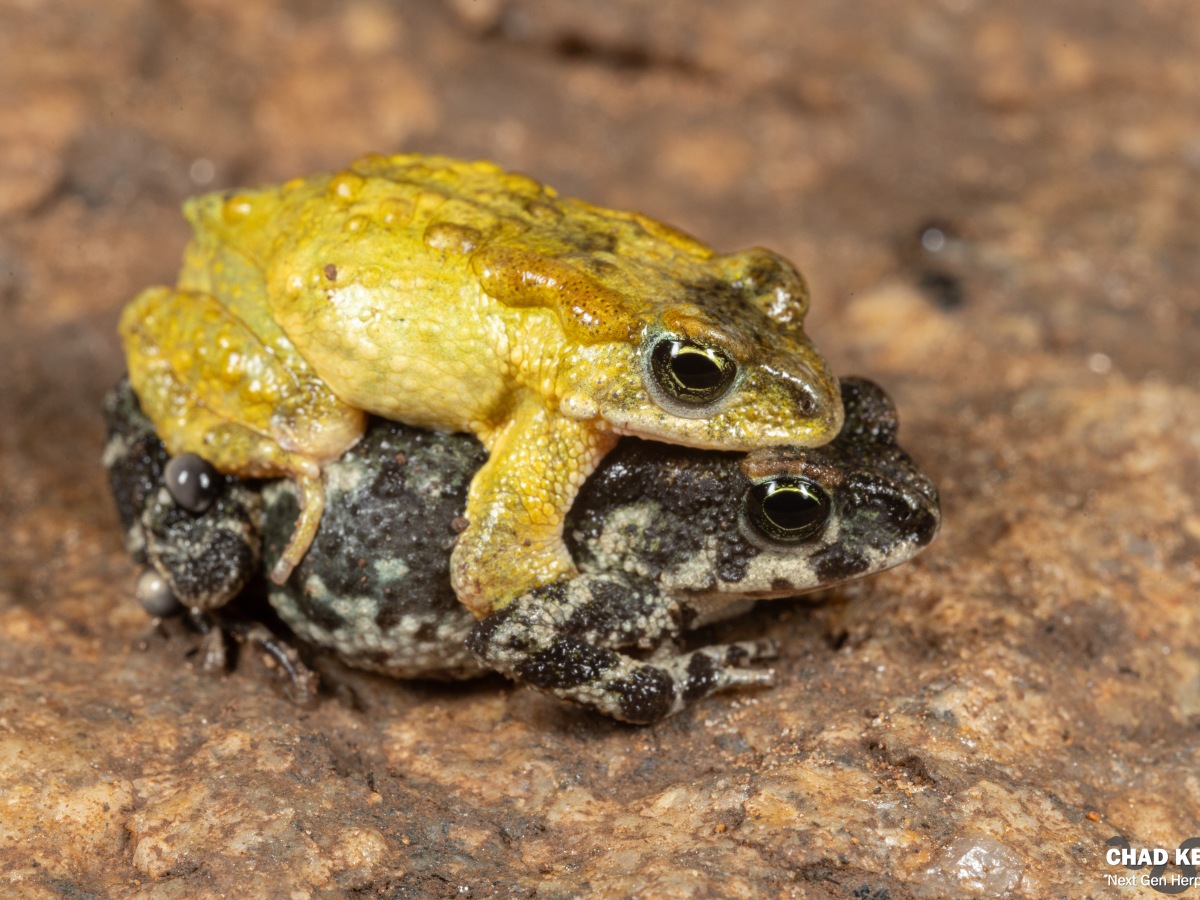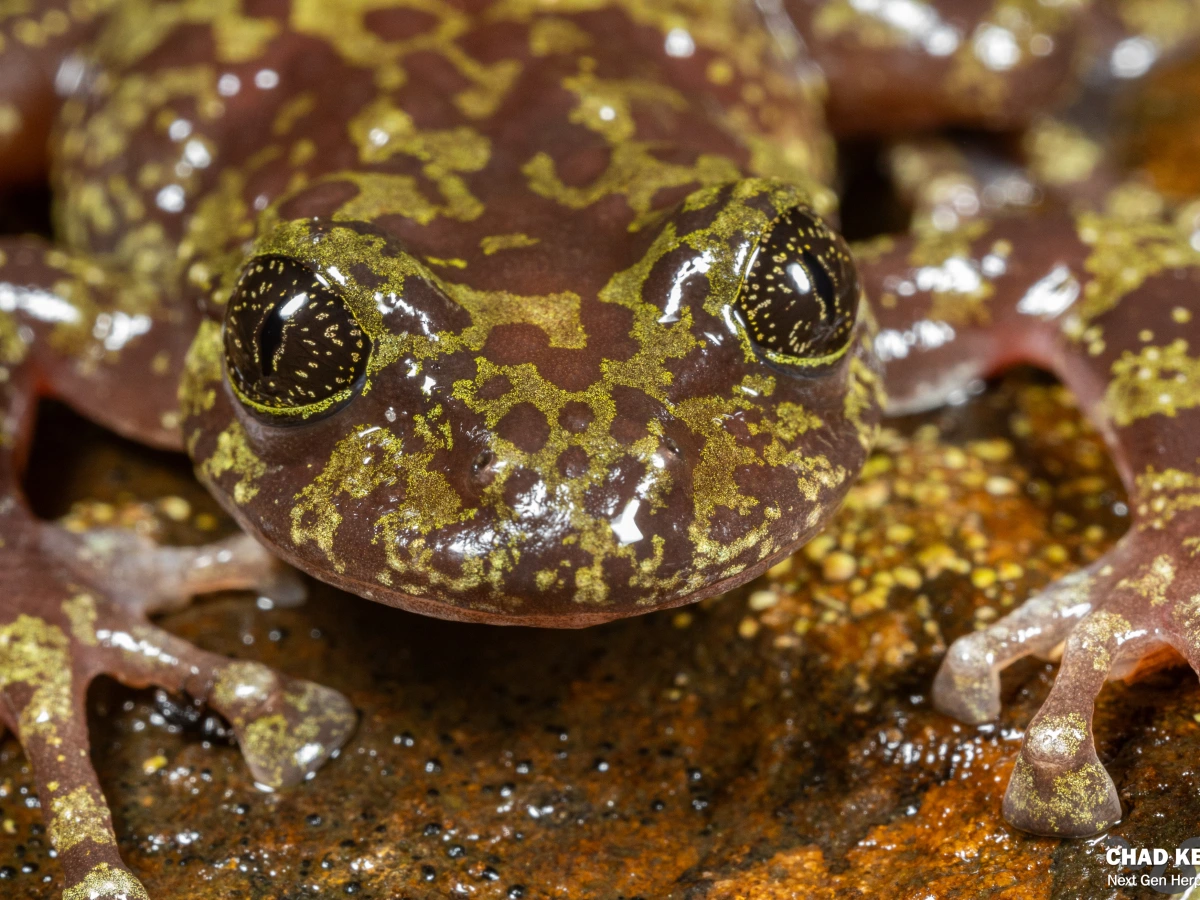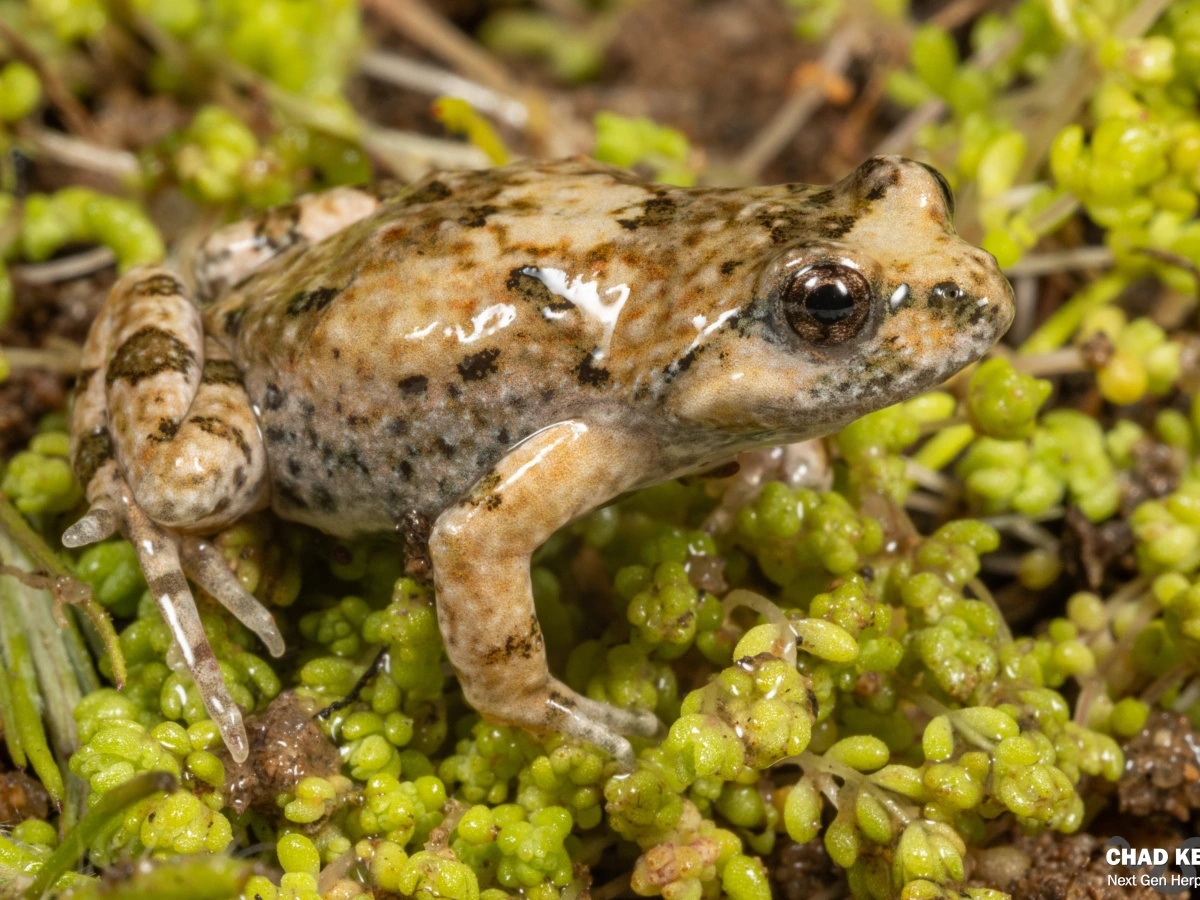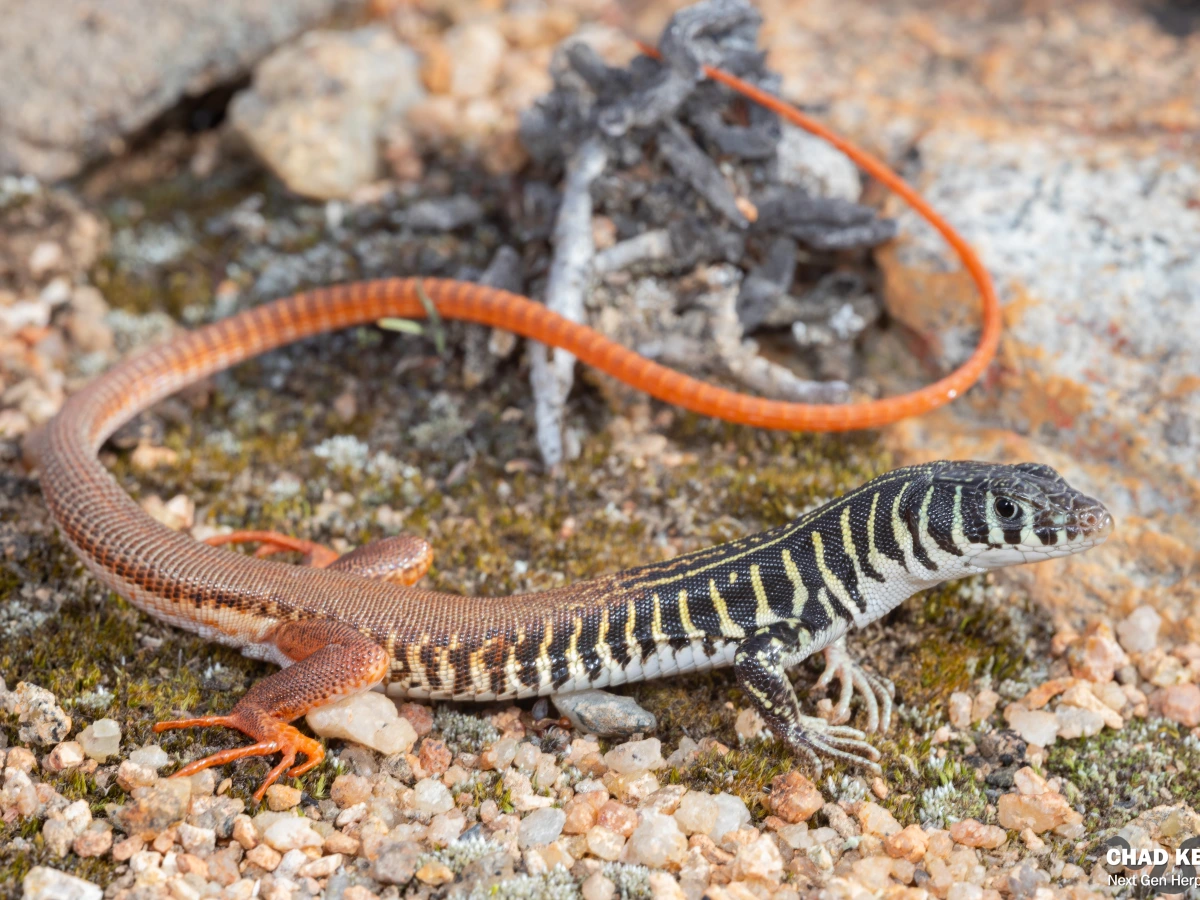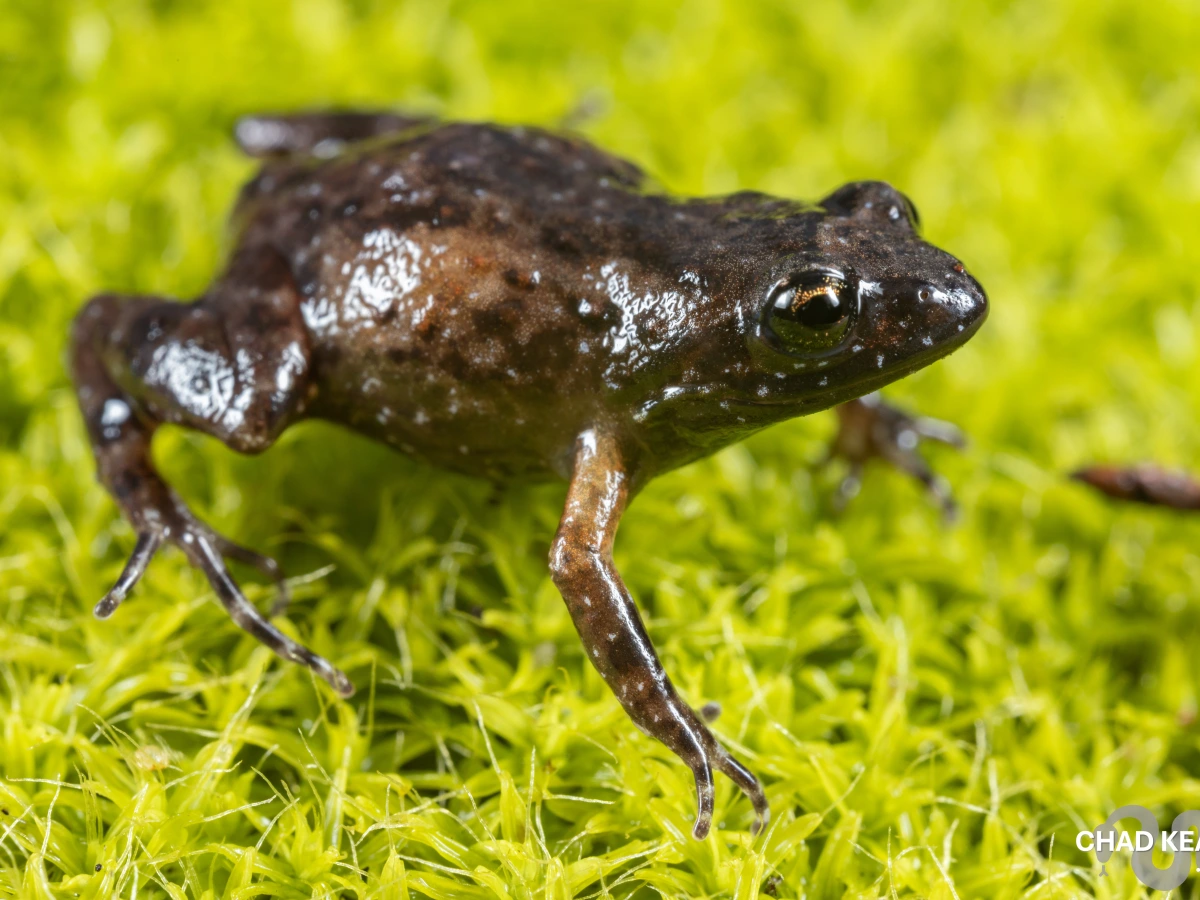Snakes of Grahamstown
This list contains all the snake species that I have found in and around Grahamstown, Eastern Cape thus far. Some species are not on the list because I do not have decent photos of them yet. Thanks to all those who have helped me find the great variety of snakes below.
Colubridae
Boomslang (Dispholidus typus typus)








Size: 1.2-1.5m.
Habits: Diurnal snakes which are found in a large variety of habitats, most commonly in trees and shrubs, but may descend to the floor to bask or find food.
Diet: Chameleons, frogs, tree-living lizards, birds and occasionally rodents.
Danger to man: The boomslang possesses a very dangerous haemotoxic venom capable of killing people. Monovalent antivenom is however available and has been found to be very effective in counteracting the venom. Although dangerous, the snake rarely bites, with most bites being received from snake handlers. There is a big misconception that boomslangs cannot inject venom on larger body parts because they are back-fanged. This is however untrue as boomslangs can open their mouth’s 170 degrees and can thus easily inject venom into a leg or an arm. Due to the placid and shy nature of this snake, there is virtually no chance of simply walking past a tree and being bitten.
Similar species: Boomslangs are easily confused with green mambas and members of the genus Philothamnus (green snakes) north of the Transkei because of the uniform green colour but in Grahamstown males tend to be more of a fluorescent green and females tend to be brown.
Southern-brown Egg Eater (Dasypeltis inornata)


Size: 60-80cm.
Habits: A nocturnal species that can be found under rocks, logs and other suitable substrate.
Diet: Bird eggs.
Danger to man: None, the snake does not possess venom and it is virtually toothless.
Similar species: Quite distinct but can be confused with the brown house snake.
Rhombic Egg Eater (Dasypeltis scabra)


Size: 40-75cm.
Habits: Can be found in most habitats, but it is particularly common in old termite mounds.
Diet: Bird eggs.
Danger to man: None, the snake does not possess venom and it is virtually toothless.
Similar species: This species is easily confused with the rhombic night adder.
Spotted-Bush Snake (Philothamnus semivariegatus)
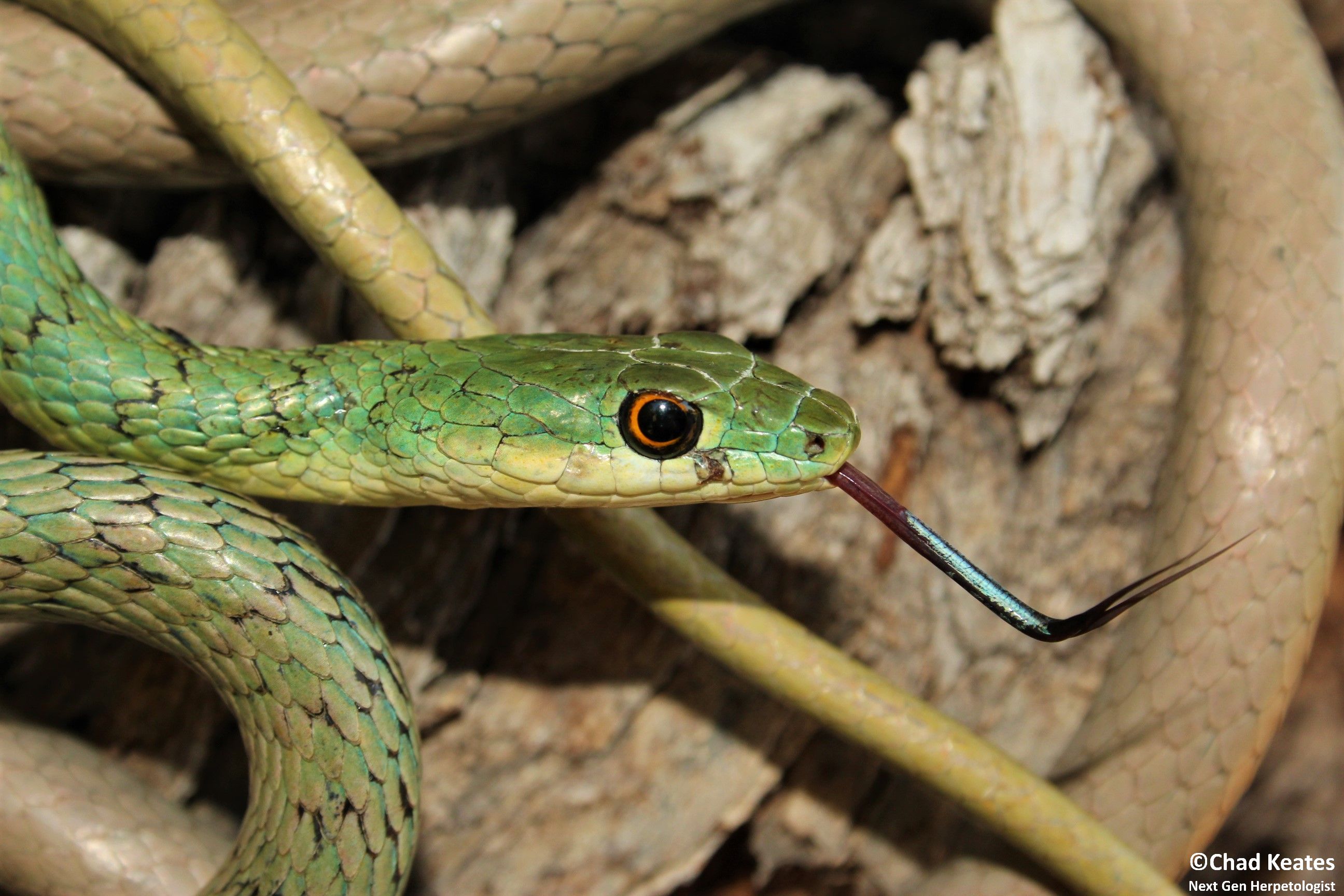

Size: 40-90cm.
Habits: This snake is an excellent climber and can be found almost exclusively in trees and shrubs where it hunts during the day for its food.
Diet: Lizards, chameleons, geckoes, and frogs.
Danger to man: None, it has no venom.
Similar species: This snake is easily confused with all members of the Philothamnus genus (green snakes). In terms of Grahamstown however, This snake is most easily confused with the western natal green snake, a snake which is far more common than the spotted bush snake in the area.
Western Natal Green Snake (Philothamnus natalensis occidentalis)


Size: 60-90cm.
Habits: This snake is a fantastic climber that spends much of its time in trees and shrubs near water. Western natal green snakes also tend to be active during the day.
Diet: Lizards, geckos and frogs.
Danger to man: None, it has no venom.
Similar species: This snake is easily confused with all members of the Philothamnus genus (green snakes). In terms of Grahamstown however, This snake is most easily confused with the spotted bush snake, but the spotted bush snake is far less common in the area.
Red-Lipped Herald (Crotaphopeltis hotamboeia)


Size: 30-70cm.
Habits: Widespread and abundant species which is commonly found in damp areas, under rocks, building debris and compost heaps.
Diet: Frogs, toads and sometimes lizards.
Danger to man: Mildly venomous, but the venom is of no concern to humans.
Similar species: Although quite distinctive, they are sometimes mistaken for rhombic night adders because of their similar nocturnal behaviourial patterns.
Lamprophiidae
Spotted Harlequin (Homoroselaps lacteus)


Size: 30-40cm.
Habits: A rarely seen, fossorial species which can often be found in old termite mounds or under rocks.
Diet: Legless skinks and thread snakes.
Danger to man: Mildly venomous, and considered of no consequence to humans even though it can inflict a painful bite on occasion.
Similar species: Very colourful and distinctive snake that loosely resembles the aurora house snake.
Brown House Snake (Boaedon capensis)


Size: 60-90cm.
Habits: A nocturnal species which is common around houses where it is often found beneath building rubble, rocks and corrugated metal.
Diet: Rodents, bats, birds, frogs, lizards and other small vertebrates.
Danger to man: None, does not possess venom.
Similar species: Larger individuals can resemble pythons but the gold bar either side of the eye is very distinctive, making identification relatively easy.
Yellow-Bellied House Snake (Lamprophis fuscus)


Size: 40-50cm.
Habits: A nocturnal and secretive species which can be found in abandoned termite mounds or under rocks.
Diet: Lizards, shrews and other small rodents.
Danger to man: None, does not possess venom.
Similar species: Can easily be mistaken with olive ground snakes and brown water snakes, especially as juveniles.
Aurora House Snake (Lamprophis aurora)

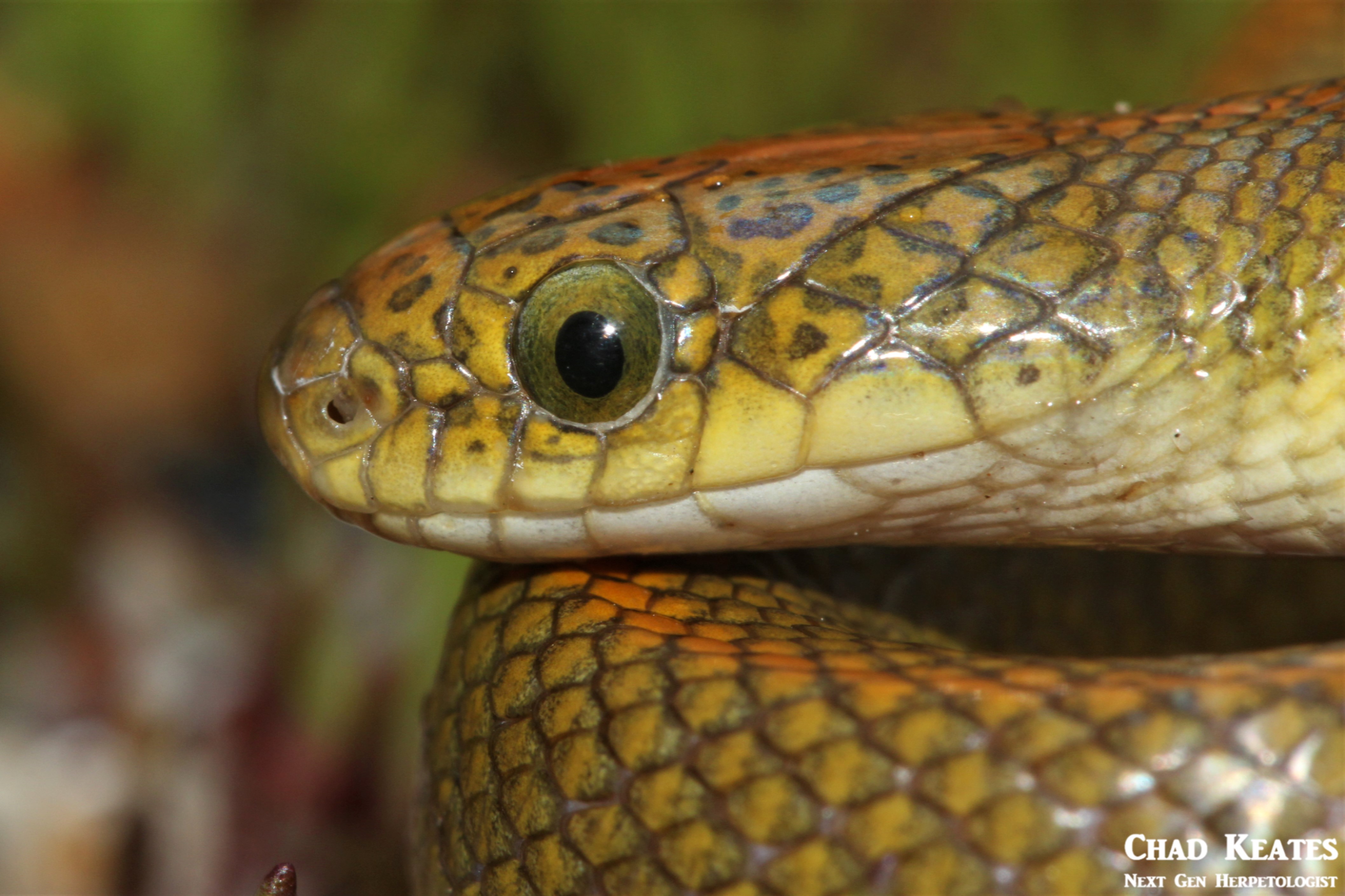
Size: 50-90cm.
Habits: A nocturnal snake which can be found in abandoned termite mounds or under rocks.
Diet: Mainly nestling rodents, but can take lizards and frogs.
Danger to man: None, does not possess venom.
Similar species: relatively distinctive, but can be mistaken with olive ground snakes and brown water snakes.
Sundevall’s Shovel-snout (Prosymna sundevallii)


Size: 24-36cm.
Habits: The snake is a terrestrial and nocturnal species that can often be found in derelict termite mounds and under rocks.
Diet: Mainly reptile eggs but can eat small lizards and potentially invertebrates.
Danger to man: None, this species does not possess venom.
Similar species: Can be confused with other shovel-snouts, of which, there are no other species in the area.
Common Brown Water Snake (Lycodonmorphus rufulus)


Size: 45-85cm.
Habits: The snake is a nocturnal hunter which is closely associated with water bodies such as dams, streams and rivers where it is often found beneath rocks and debris on the banks of the water sources.
Diet: Mainly frogs, tadpoles and small fish but can take small rodents.
Danger to man: None, this species does not possess venom.
Similar species: Can be confused with the olive ground snake and yellow-bellied house snake but within Grahamstown, the brown water snake tends to be the most commonly encountered of the three.
Dusky Bellied Water Snake (Lycodonomorphus laevissimus)


Size: 70-120cm.
Habits: A diurnal hunter which is closely associated with water sources such as dams, streams and rivers where it is often found beneath rocks either on the banks of water sources or in the water itself.
Diet: Frogs, tadpoles and fish.
Danger to man: None, this species does not possess venom.
Similar species: Can be confused with the brown water snake.
Olive ground Snake (Lycodonomorphus inornatus)
Size: 45-75cm.
Habits: Nocturnal species that can often be found under rocks and rubble and often in close proximity to human dwellings.
Diet: Rodents, lizards and other snakes
Danger to man: None, the snake does not possess venom
Similar species: Can be confused with the common brown water snake, the dusky-bellied water snake and the yellow-bellied house snake.
Cape Wolf Snake (Lycophidion capensis)


Size: 35-64cm.
Habits: Nocturnal species that can often be found under rocks and logs.
Diet: Lizards, mainly skinks
Danger to man: None, the snake does not possess venom
Similar species: Distinctive looking snake that is not easily confused with other Grahamstown species..
Black-Headed Centipede Eater (Aparallactus capensis)

Size: 25-30cm.
Habits: Nocturnal species which is most commonly found in abandoned termite mounds or beneath rocks or logs.
Diet: Centipedes.
Danger to man: None, although the snake possesses venom, it has no effect on people.
Similar species: Very distinctive snake that is not easily confused with anything within the Grahamstown area.
Slug eater (Duberria lutrix)


Size: 30-35cm.
Habits: A terrestrial, diurnal species which is often found beneath rocks, logs, or in tufts of grass and other vegetation.
Diet: Slugs and snails.
Danger to man: None, does not possess venom.
Similar species: May be confused with mole snakes, but mole snakes are much larger and very rarely sighted in Grahamstown.
Spotted Skaapsteker (Psammophylax rhombeatus)

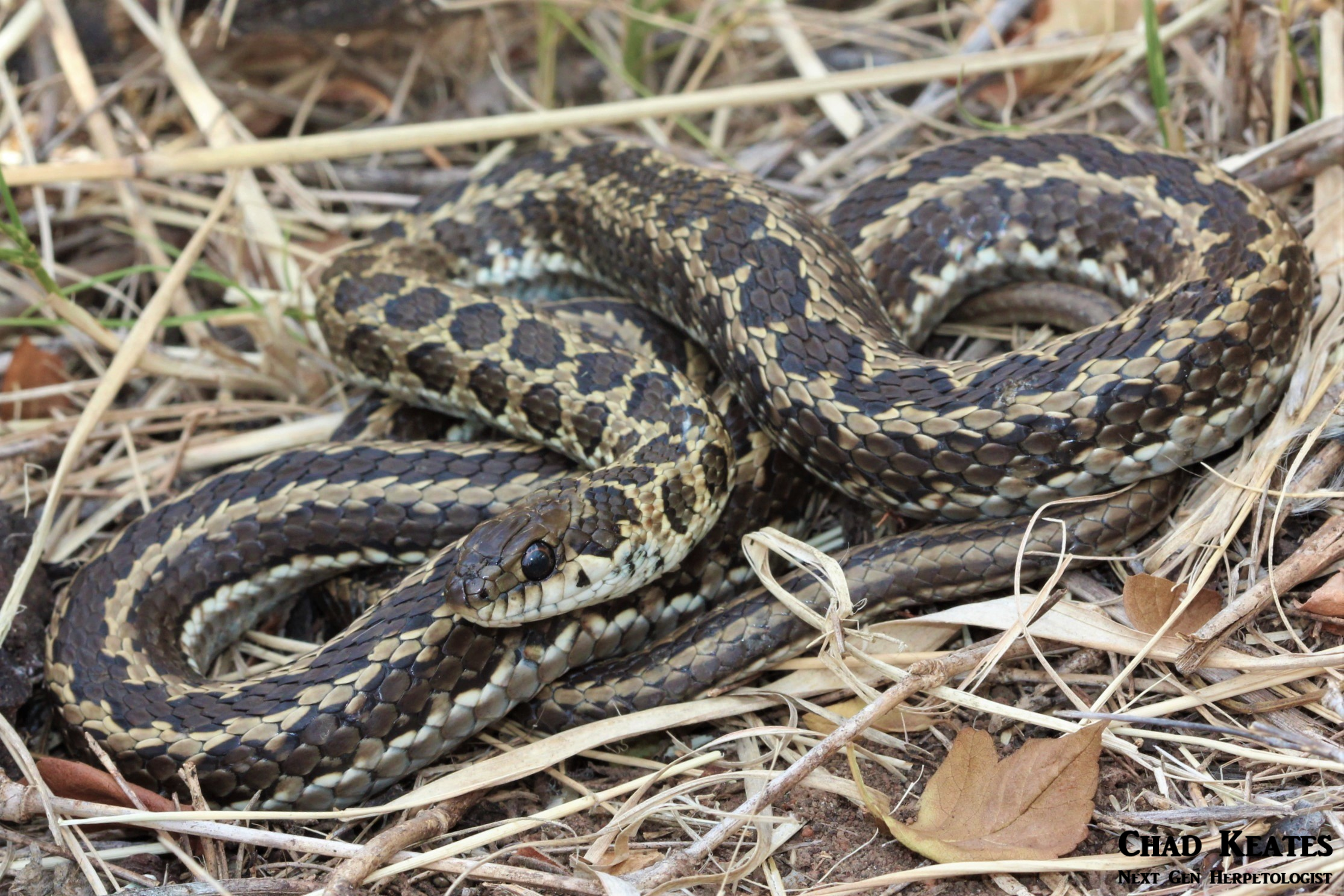
Size: 45-85cm
Habits: A fast-moving, diurnal species which can be found in a large range of habitats, mainly under rocks and fallen debris.
Diet: Mainly rodents, but also eats lizards, birds, frogs and other snakes
Danger to man: Mildly venomous species which may cause localized swelling, but the venom is not capable of killing or even hospitalizing humans.
Similar species: Easily confused with other sand, whip and grass snake species. Luckily the cross-marked whip snake is the only other commonly encountered whip snake in the area, making positive identification relatively easy in Grahamstown.
Cross-Marked Whip Snake (Psammophis crucifer)
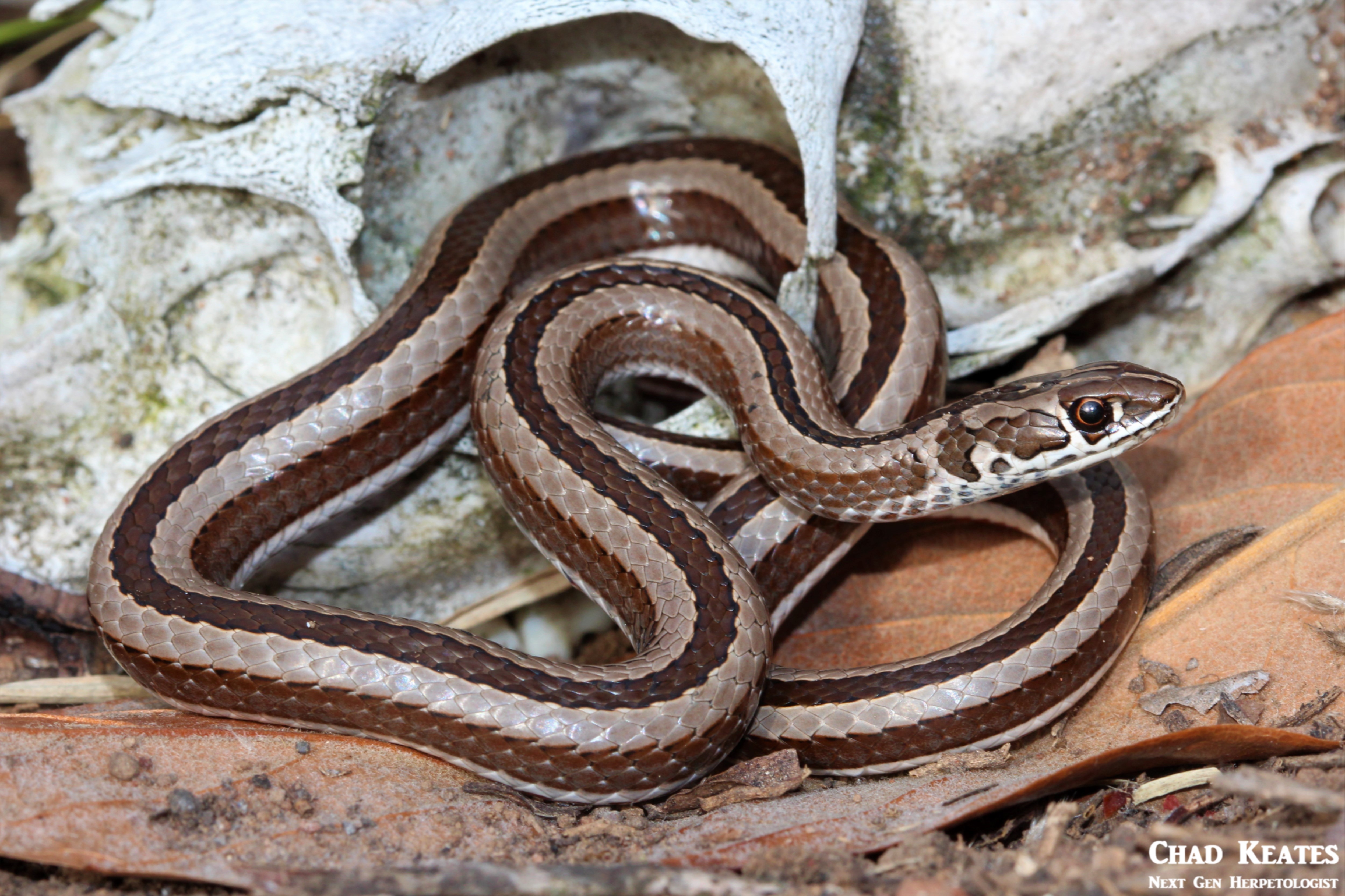


Size: 40-60cm.
Habits: Diurnal snakes that are often found inside old termite mounds and under rocks and other fallen debris.
Diet: Lizards, geckos and frogs.
Danger to man: Mildly venomous, but the venom is of no concern to humans.
Similar species: Easily confused with other sand, whip and grass snake species. Luckily the spotted skaapsteker is the only other commonly encountered psammophid in the area, making positive identification relatively easy in Grahamstown.
Leptotyphlopidae
Cape Worm Snake (Leptotyphlops nigricans)


Size: 15-17cm.
Habits: Fossorial snakes which are seldom seen above ground because they spend much of their time below ground or beneath rocks or logs.
Diet: Invertebrates.
Danger to man: None, they do not possess venom.
Similar species: Almost indistinguishable from other worm snakes but luckily, the cape worm snake is the only species in the genus which is found in Grahamstown.
Typhlopidae
Bibron’s Blind Snake (Afrotyphlops bibronii)


Size: 30-38cm
Habits: Seldom encountered fossorial species that spends much of its time underground. It can however be found above ground after heavy rains.
Diet: Ants and termite larva
Danger to man: None, they do not possess venom.
Similar species: Easily confused with the other blind snakes, especially the delalande’s beaked blind snake, which can also be found in and around Grahamstown.
Delalande’s Beaked Blind Snake (Rhinotyphlops lalandei)


Size: 25-30cm
Habits: A fossorial species that can be found in the soil under rocks and logs and in derelict termite mounds.
Diet: Invertebrates and termites.
Danger to man: None, they do not possess venom.
Similar species: Easily confused with the other blind snakes, especially the bibron’s blind snake, which can also be found in and around Grahamstown.
Elapidae
Cape Cobra (Naja nivea)


Size: 1.2-2.4m
Habits: A diurnal cobra which can often be found out-and-about in search of food or in abandoned mammal burrows. Although more accustomed to the ground, the Cape cobra is also an accomplished climber capable of scaling and perching in large trees and bushes.
Diet: Rodents, toads, birds, other snakes and lizards. Also known to raid weaver nests.
Danger to man: Very dangerous snake that possess a lethal neurotoxic venom capable of killing humans in a very short period of time. The venom is considered the most potent of the African cobras and anyone bitten by this snake should make their way to the hospital immediatly.
Similar species: This snake is sometimes confused with other cobras and mole snakes. The cape cobra is however the only cobra present in the area and the mole snake is very rarely encountered in and around Grahamstown.
Rinkhals (Hemachatus haemachatus)

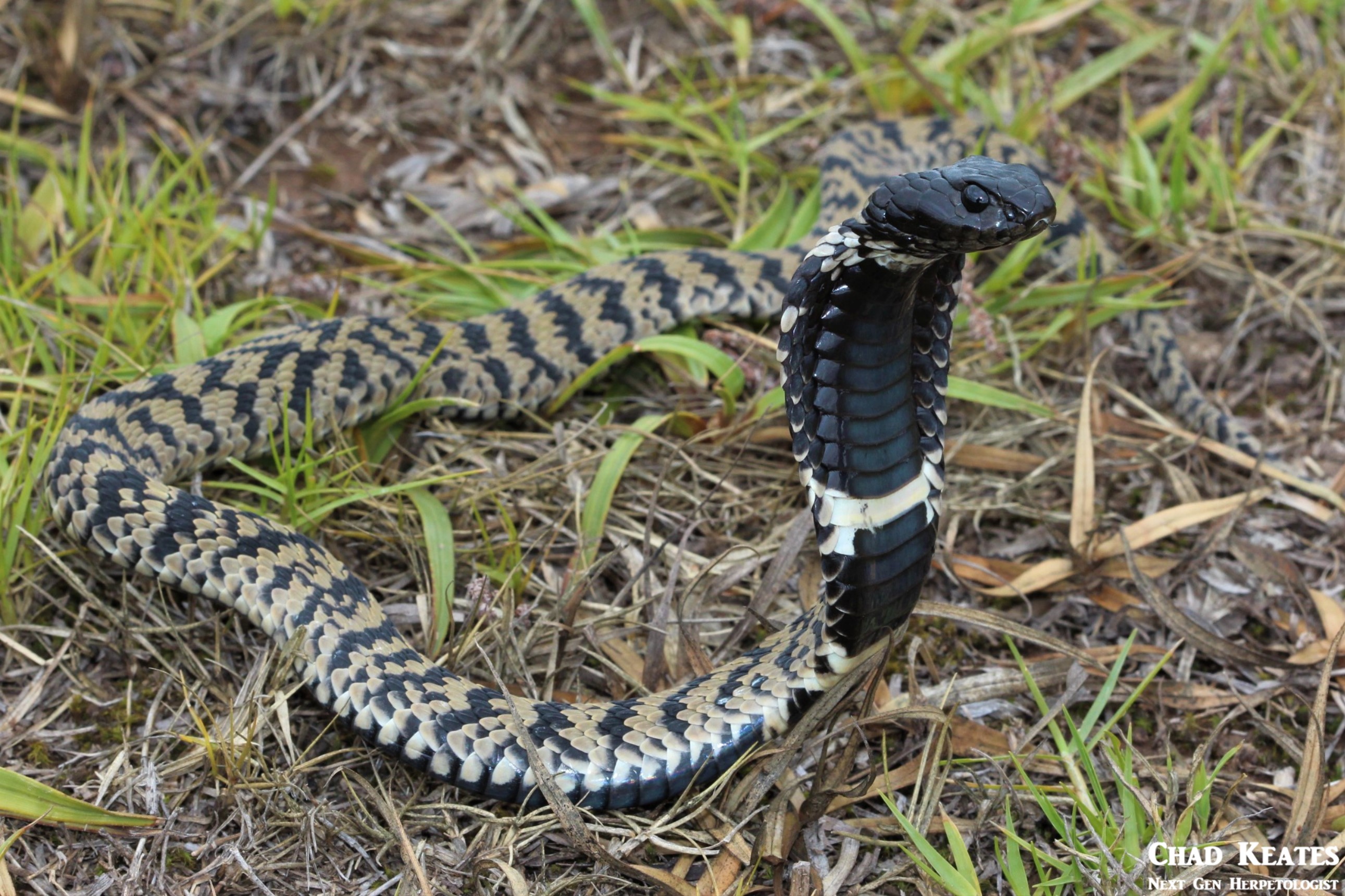
Size: 90-110cm
Habits: A diurnal snake which is most common in grasslands where it can be found in close proximity to sources of water, compost heaps and rockeries. It is also quite common on golf courses.
Diet: They particularly like toads but will also eat rodents, lizards, snakes and birds and their eggs.
Danger to man: Rinkhals venom is a mix of both cytotoxic and neurotoxic elements, and if left untreated, the venom is capable of killing people. Although listed as an elapid, the rinkhals is not a true cobra because it gives birth to live young and thus the venom is not as potent as its cobra cousins. Although deaths from rinkhals are very rare, medical attention should still be sought immediately in the case of a bite. Unlike any other snake in Grahamstown, this species is also capable of spitting venom and should one have venom spat into their eyes, they should rinse their eyes out thoroughly with water and seek out a doctor as soon as possible to prevent permanent damage to the eyes. The same course of action should also be taken for pets, especially dogs who often get venom spat into their eyes when they attempt to confront the snake.
Similar species: This snake is sometimes confused with the mozambiqe spitting cobra and the snouted cobra but luckily none of this species occur in or around Grahamstown.
Viperidae
Puff Adder (Bitis arietans)



Size: 90-100cm
Habits: This snake spends much of its time under bushy cover where it uses its’ camouflage to blend into its surroundings. During mating season these snakes however become very active and thus become more common to walkers and hikers who often see them cruising through the veld in search of mates
Diet: Rats, mice and other small vertebrates
Danger to man: Very dangerous cytotoxic venom that can kill if left untreated. The venom of this snake is however slow acting leaving victims of this bite much time to get to hospital. Although this snake has a bad reputation because of the sheer amount of bites recorded throughout South Africa as a result of people accidentally stepping on them whilst they are in ambush mode, very few bites actually prove to be fatal.
Similar species: Easily confused with other adders, but luckily, the rhombic night adder is the only other adder found in Grahamstown. There are records of berg and albany adder in and around Grahamstown but neither of these species have been seen for a long time.
Rhombic Night Adder (Causus rhombeatus)
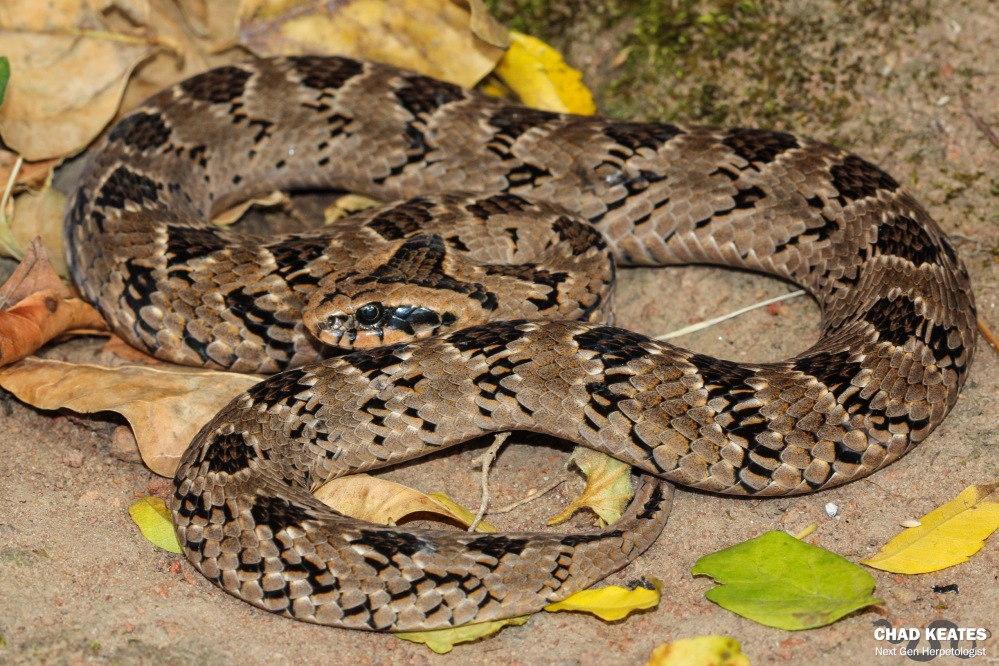

Size: 30-60cm
Habits: Common in damp areas where they can be found under rocks, logs and in abandoned termite mounds.
Diet: Toads and other frogs
Danger to man: Mild cytotoxic venom that is dangerous but not life-threatening, hospitalization may be required though. The venom may be potentially lethal to small dogs.
Similar Species: This snake is very easily confused with the rhombic egg eater. It is also sometimes confused with adders but luckily the puff adder is the only other adder currently recorded in and around Grahamstown.
Sources:
Alexander, G. & Marais, J. 2007. A Guide to the Reptiles of Southern Africa. Cape Town. STRUIK Nature.
Branch, B. 1988. Snakes and other Reptiles of Southern Africa. Cape Town. STRUIK.
Branch, B. 2016. Snakes and other Reptiles of Southern Africa. Cape Town. STRUIK Nature.
Marais, J. 2004. A Complete Guide to the Snakes of Southern Africa. Cape Town. STRUIK.
Marais, J. 2014. Snakes and Snakebite in Southern Africa. Cape Town. STRUIK Nature.
 Chad Keates
Chad Keates 


